BALLISTICS
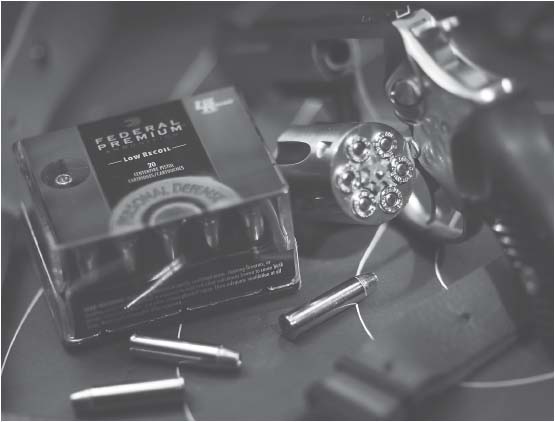
172 CENTERFIRE RIFLE BALLISTICS
6.5X55 SWEDISH TO .270 WINCHESTER
.270 WINCHESTER TO .270 WINCHESTER
7MM REM MAGNUM TO 7MM REM MAGNUM
7MM REM MAGNUM TO 7MM WEATHERBY MAGNUM
7MM WEATHERBY MAGNUM TO .30 T/C HORNADAY
.30 T/C HORNADAY TO .308 WINCHESTER
.308 WINCHESTER TO .308 WINCHESTER
.308 WINCHESTER TO .30-06 SPRINGFIELD
.30-06 SPRINGFIELD TO .30-06 SPRINGFIELD
.30-06 SPRINGFIELD TO .30-06 SPRINGFIELD
.30-06 SPRINGFIELD TO .300 WINCHESTER MAGNUM
.300 WINCHESTER MAGNUM TO .300 WINCHESTER MAGNUM
.300 WINCHESTER MAGNUM TO .300 WEATHERBY MAGNUM
.300 WEATHERBY MAGNUM TO .30-378 WEATHERBY MAGNUM
7.82 (.308) WARBIRD TO .325 WSM
.325 WSM TO .338 WINCHESTER MAGNUM
.338 WINCHESTER MAGNUM TO .338 EXCALIBER
9.3X74 R TO .375 REM ULTRA MAGNUM
.470 NITRO EXPRESS TO .700 NITRO EXPRESS
205 CENTERFIRE HANDGUN BALLISTICS
.41 REM MAGNUM TO .45 AUTOMATIC (ACP)
Ballistics Tables for Modern Sporting Rifles
Introduction:
Ballistics tables for modern sporting rifle cartridges
Most ammunition manufacturers publish exterior ballistics data to help shooters compare loads. The data also shows what can be reasonably expected of both the factory ammo and handloads. Tables here combine information from a variety of manufacturers, so you don’t have to scrounge catalogs or flip pages in one to find a corresponding load in another. Of course, new loads are appearing all the time, so these tables are in truth “almost complete.” Some offerings here have been discontinued or replaced but are still in common use (Hornady’s Light and Heavy Magnum ammunition, for example, has been supplanted by its more inclusive Superformance line).
Most bullet-type abbreviations are self-explanatory: FMJ=full metal jacket; HP=hollow-point; SP = softpoint —except in the case of Hornady ammunition, where SP=Spire Point, the trade name for the firm’s signature pointed softpoint. HE=Federal High Energy; LM and HM=Hornady Light and Heavy Magnum.
Zero range is 200 yards for most flat-shooting cartridges; however, some data was compiled with a zero at middle yardage—150 or 250 yards. These zeros are obvious. When, say, a bullet strikes high at 100 yards and low at 200, assume the zero is 150.
Barrel length influences velocity. Chronograph readings from high-velocity rifle rounds are typically taken from 24 and 26 inch barrels. Figure roughly 50 fps loss per inch in shorter barrels, though actual differences vary by load.
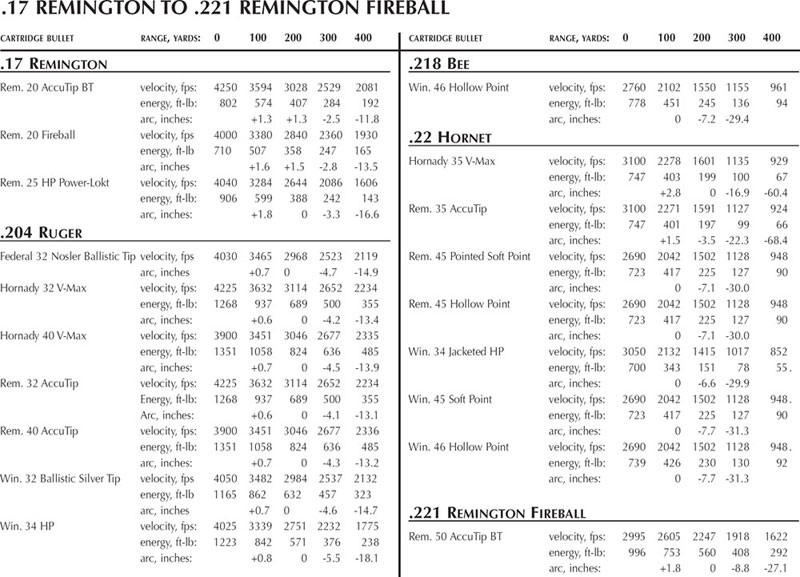

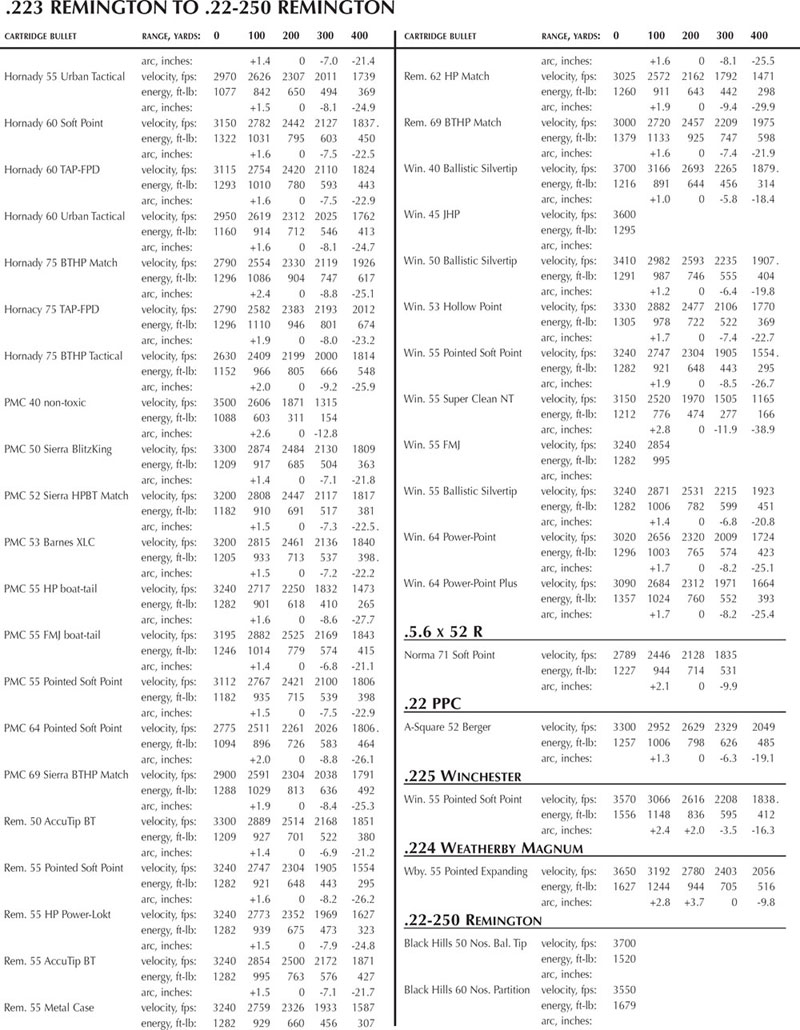
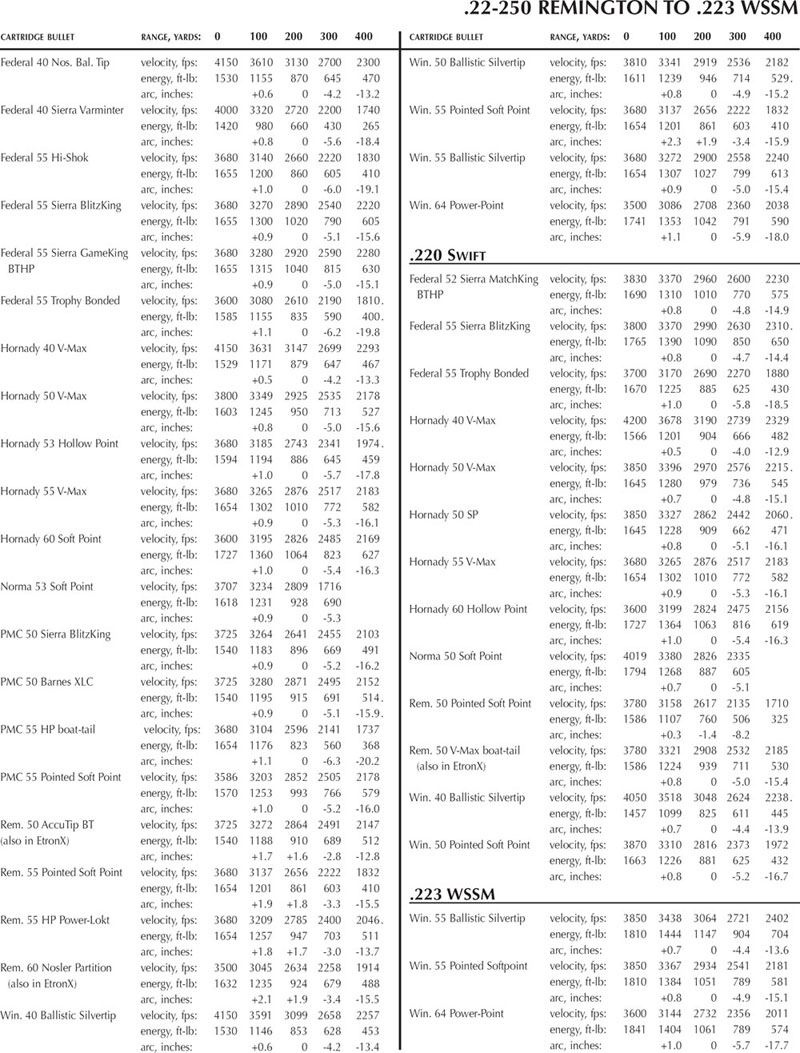
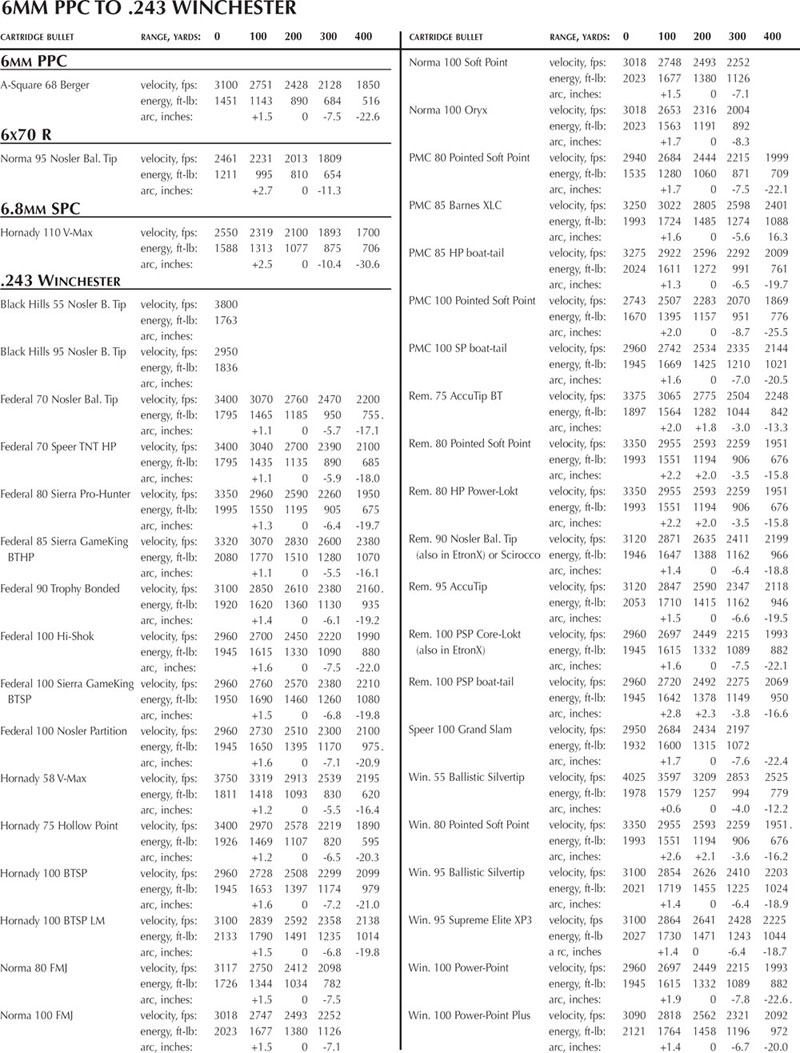
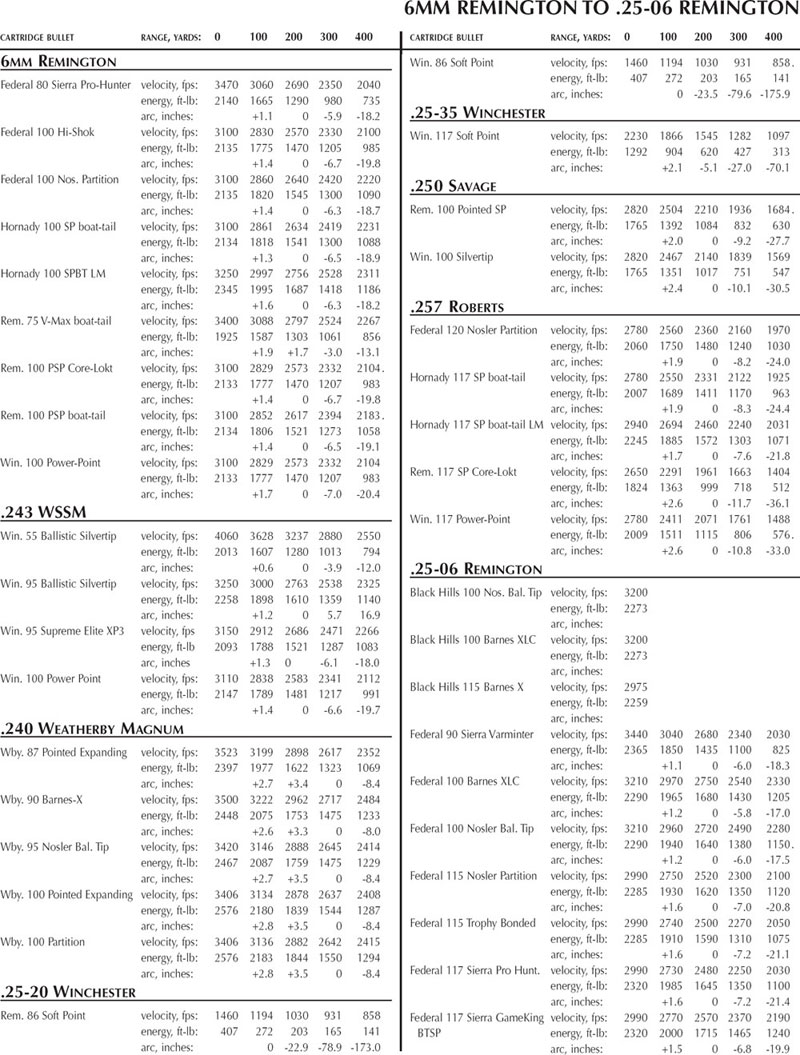
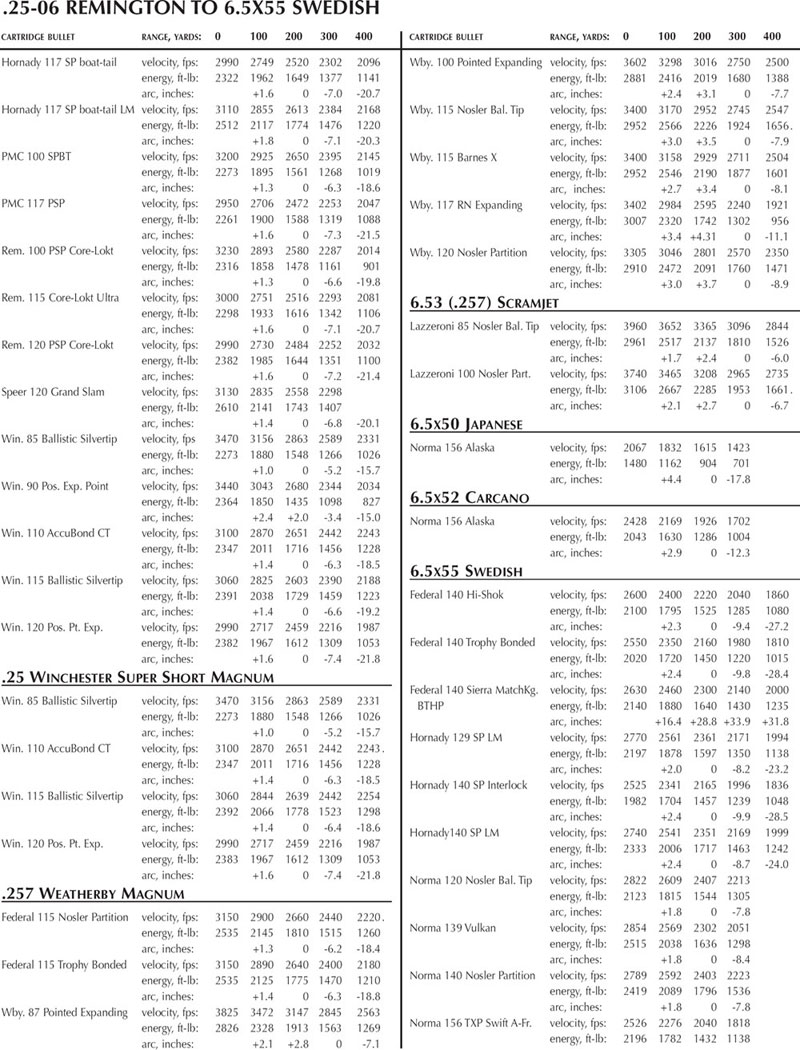
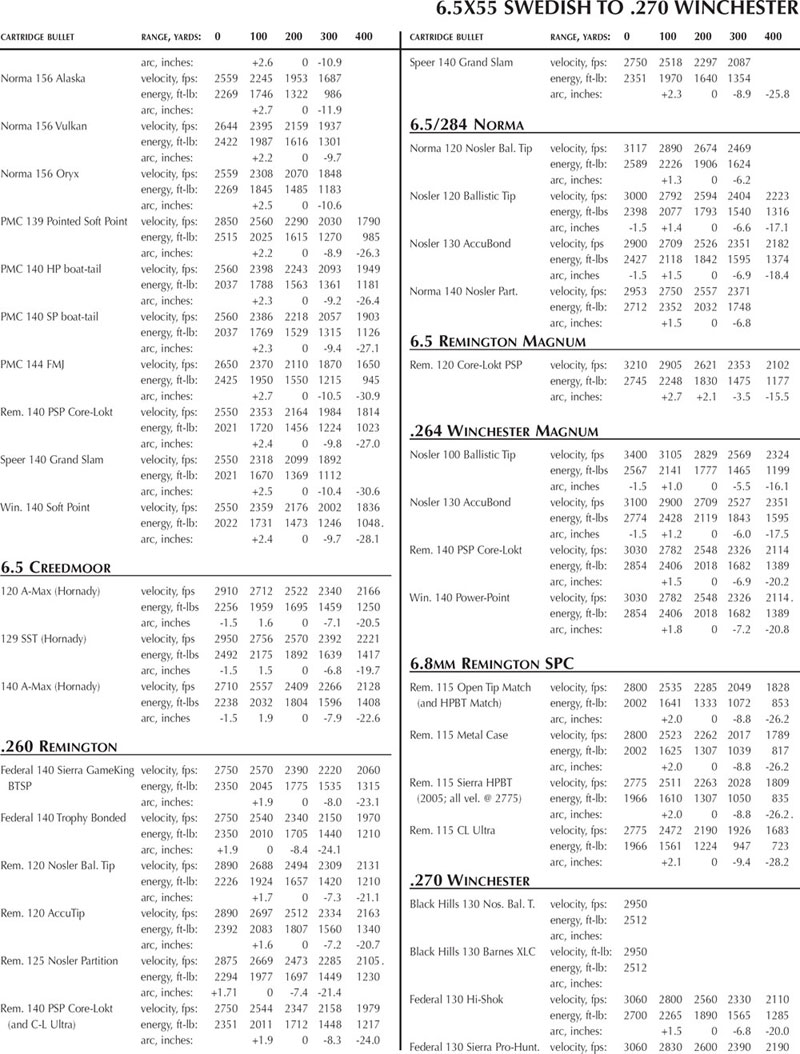
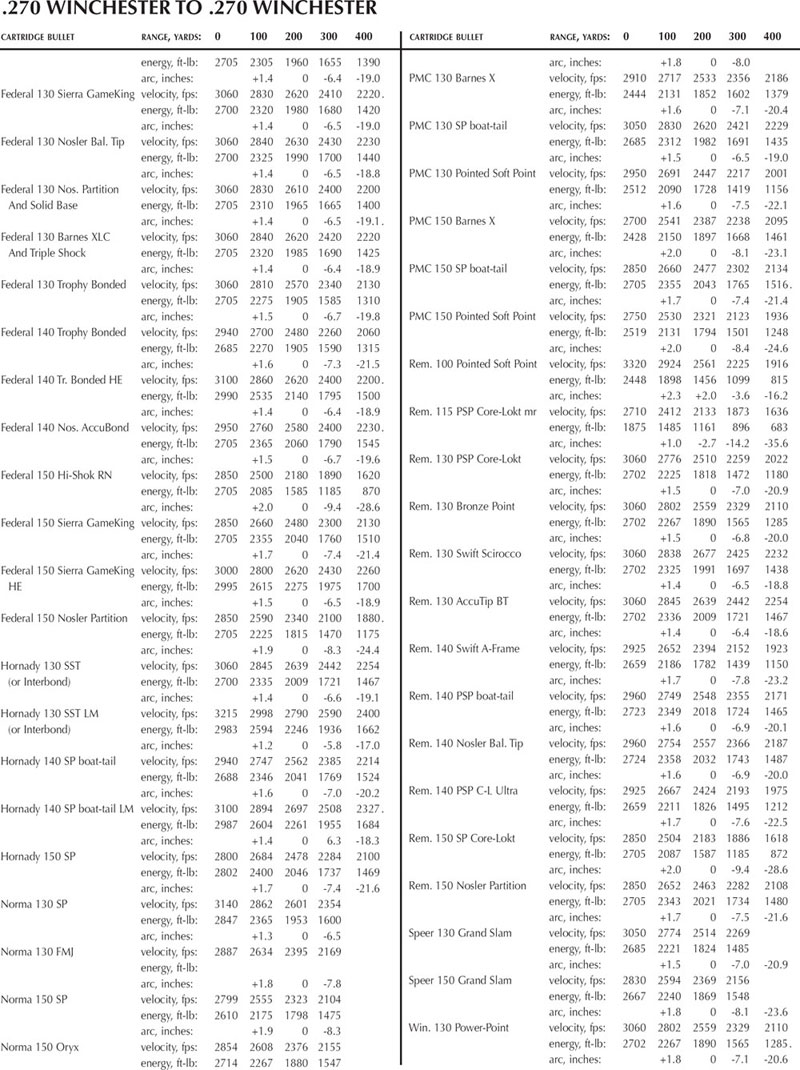
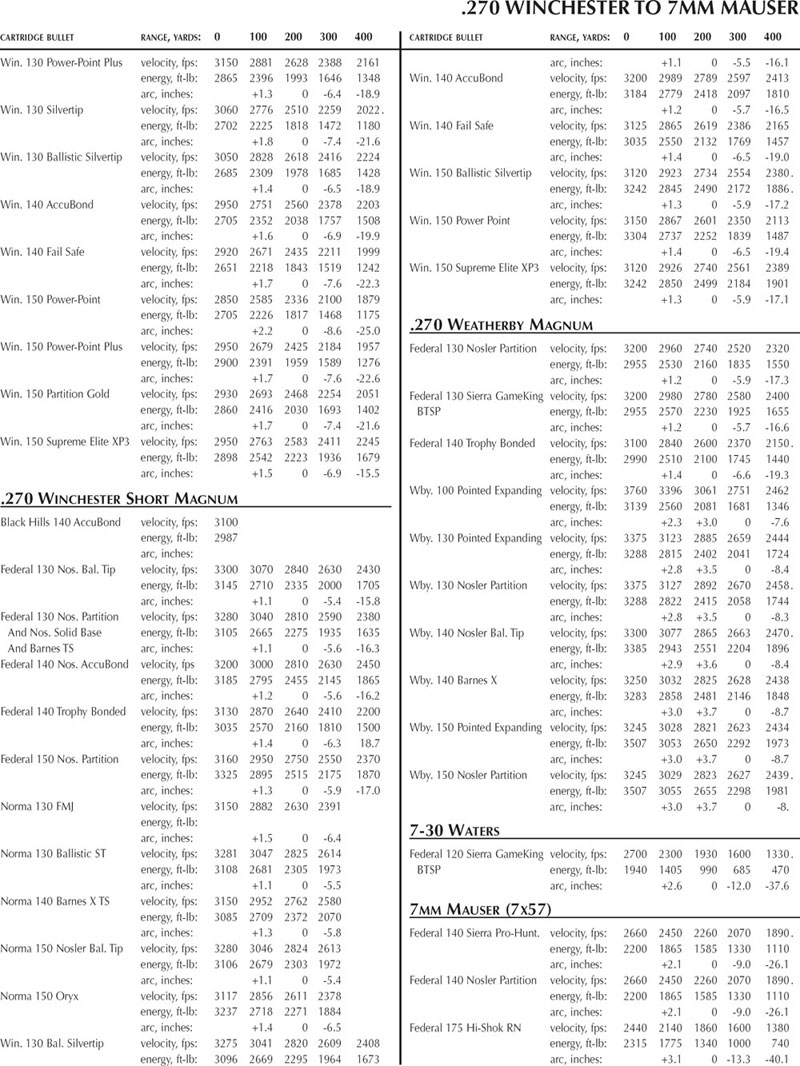


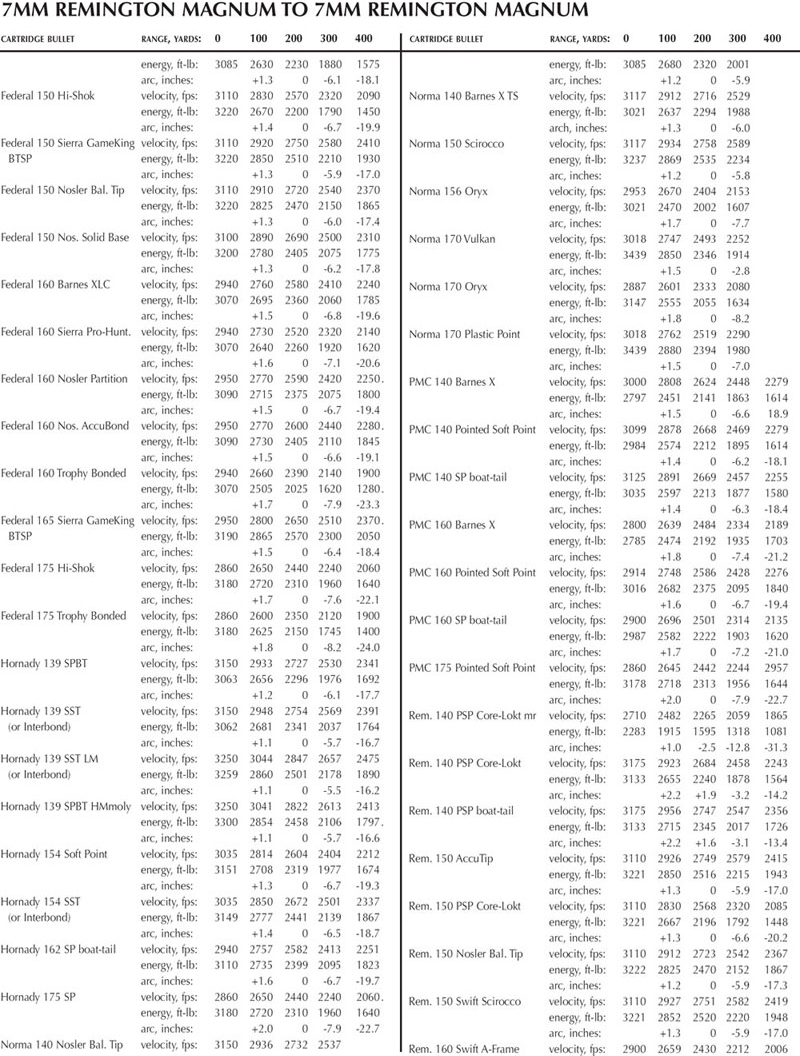

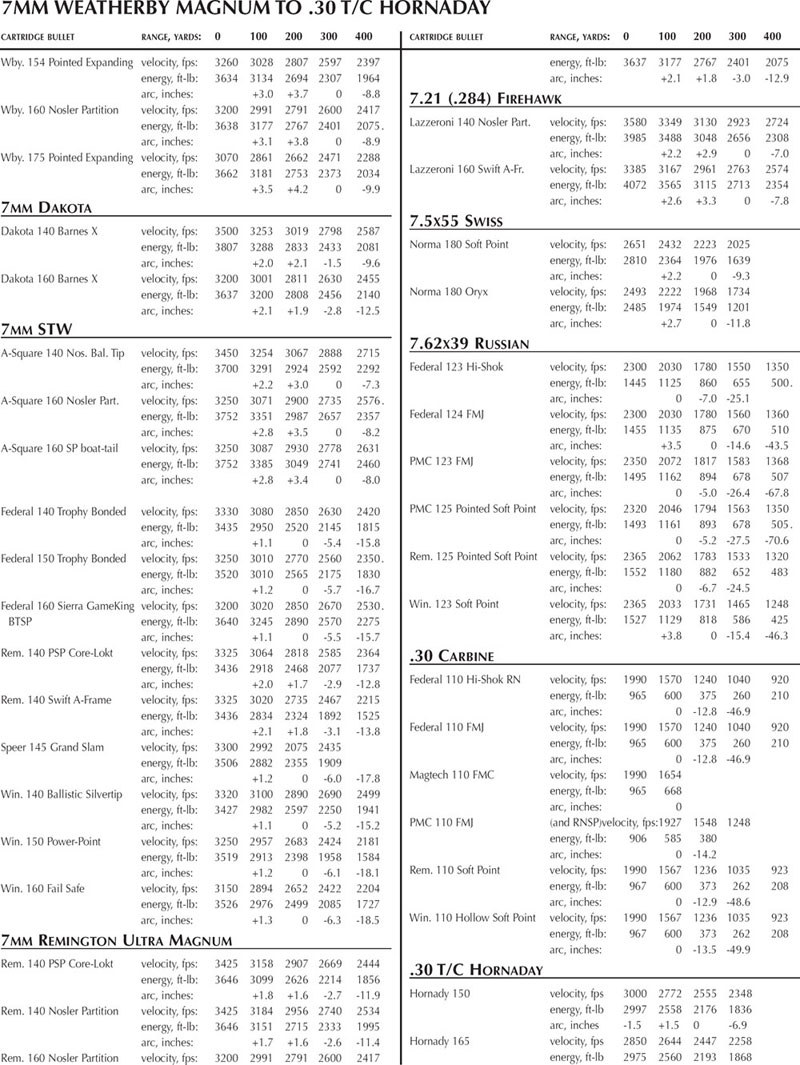

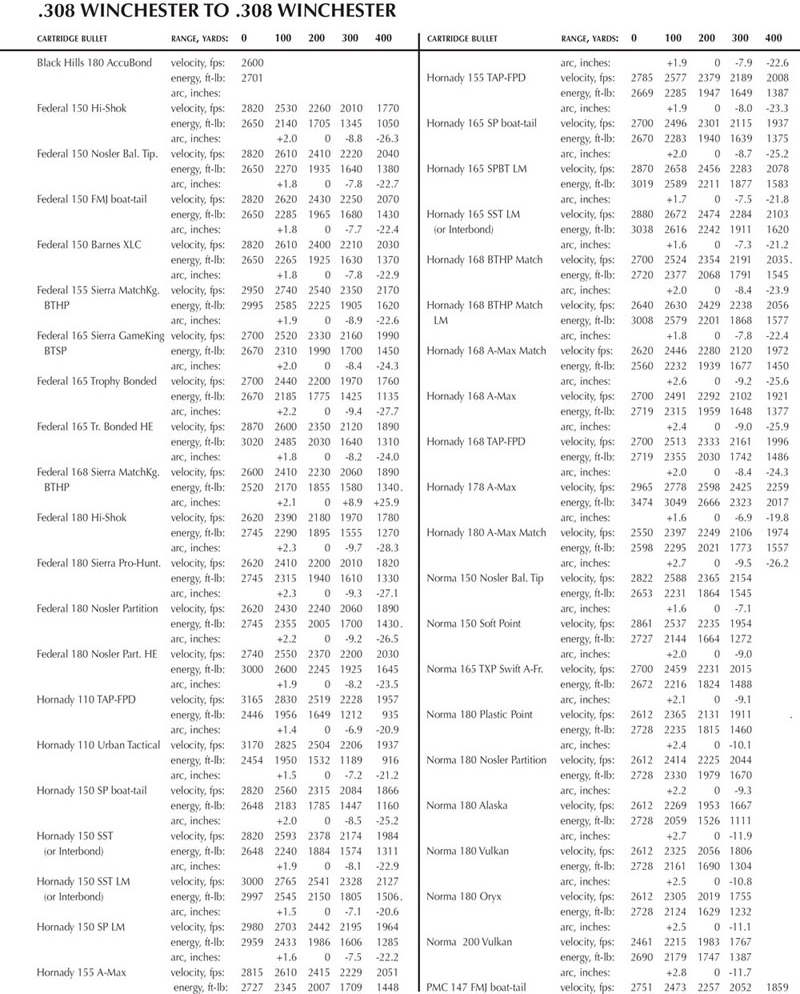

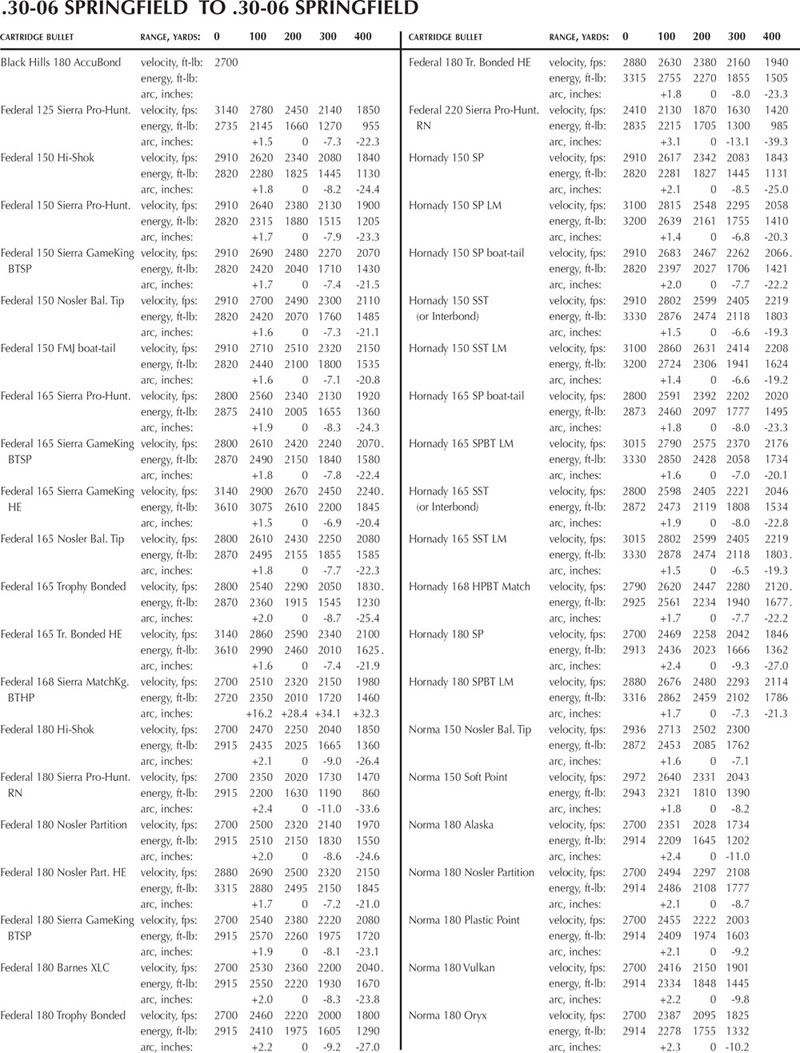


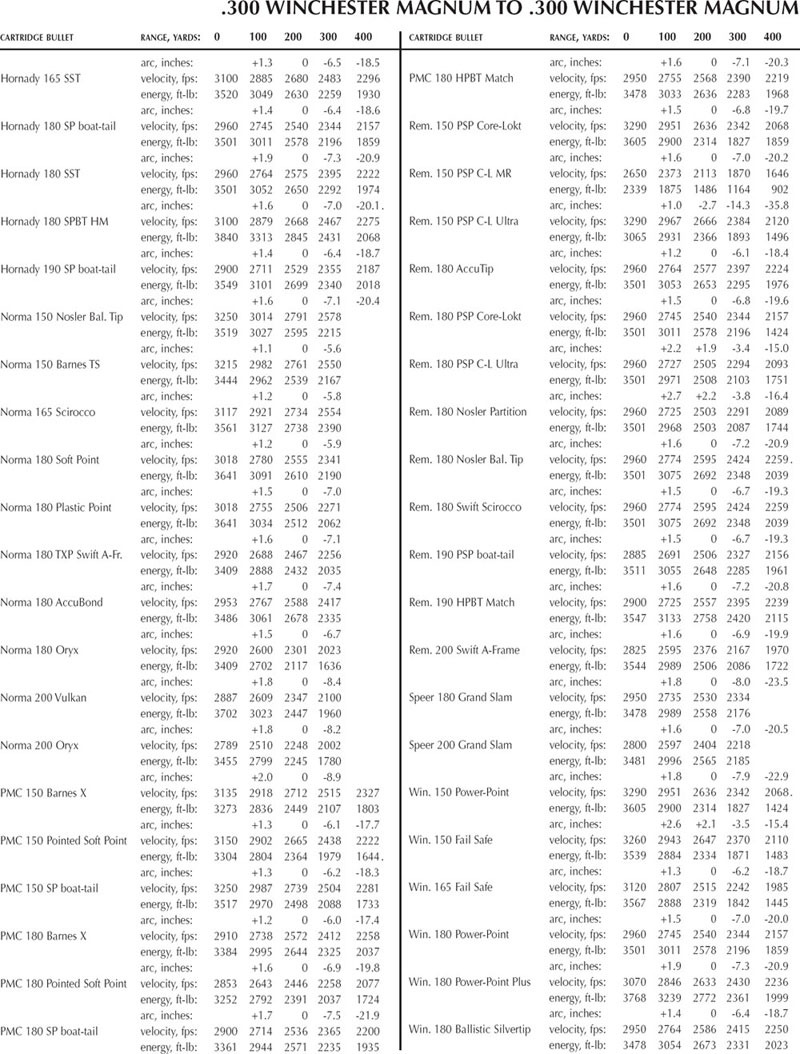

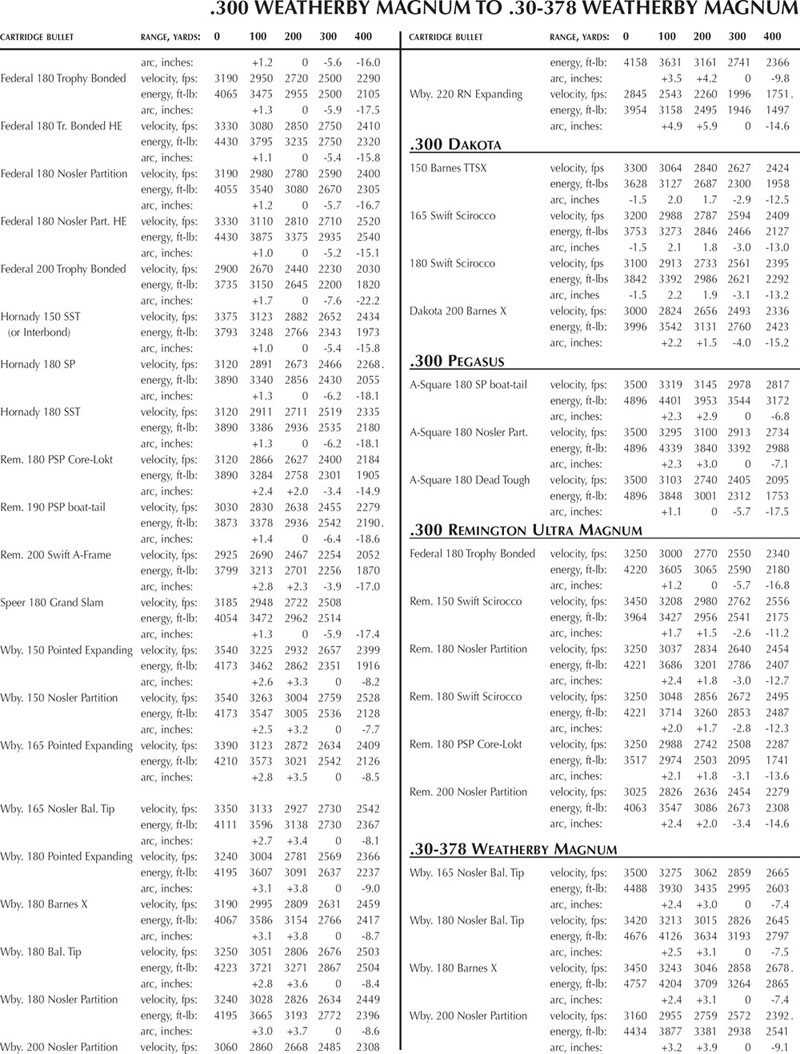
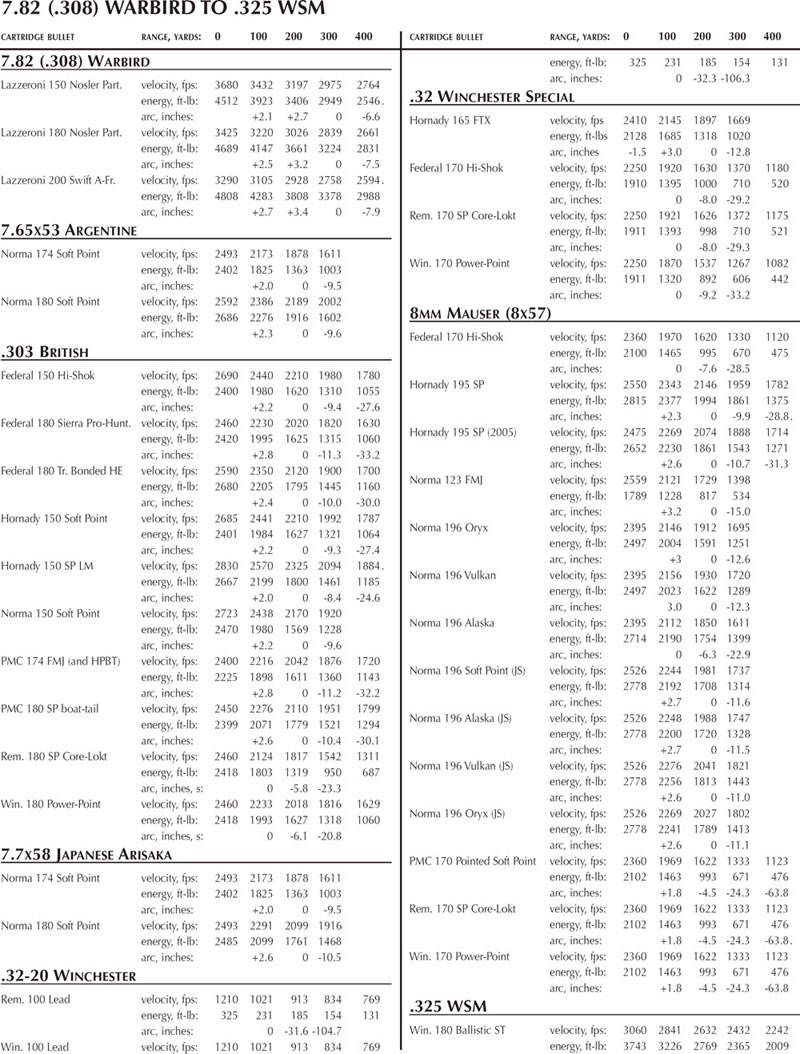
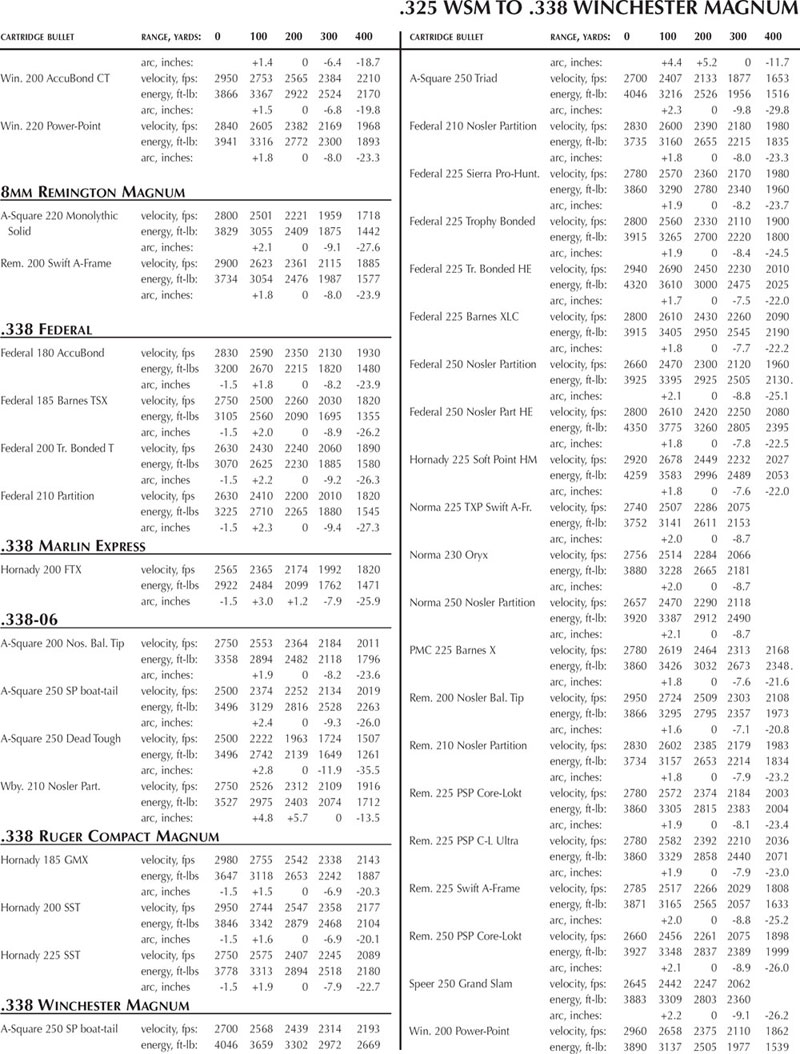

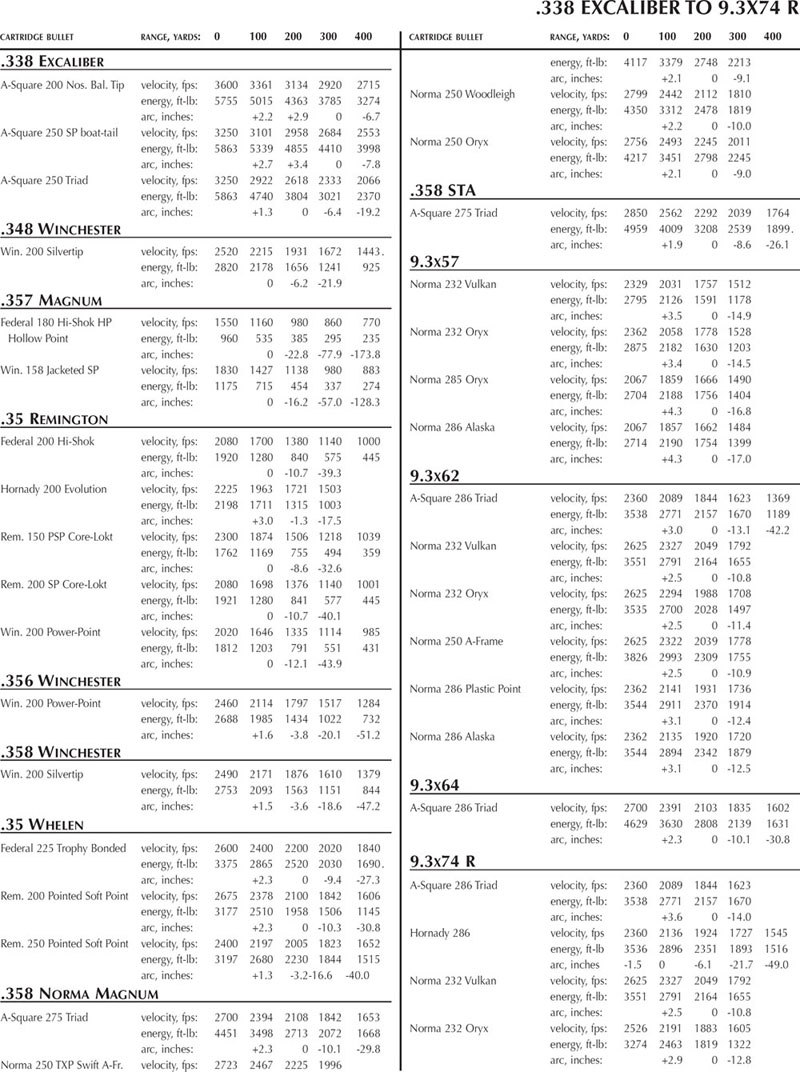
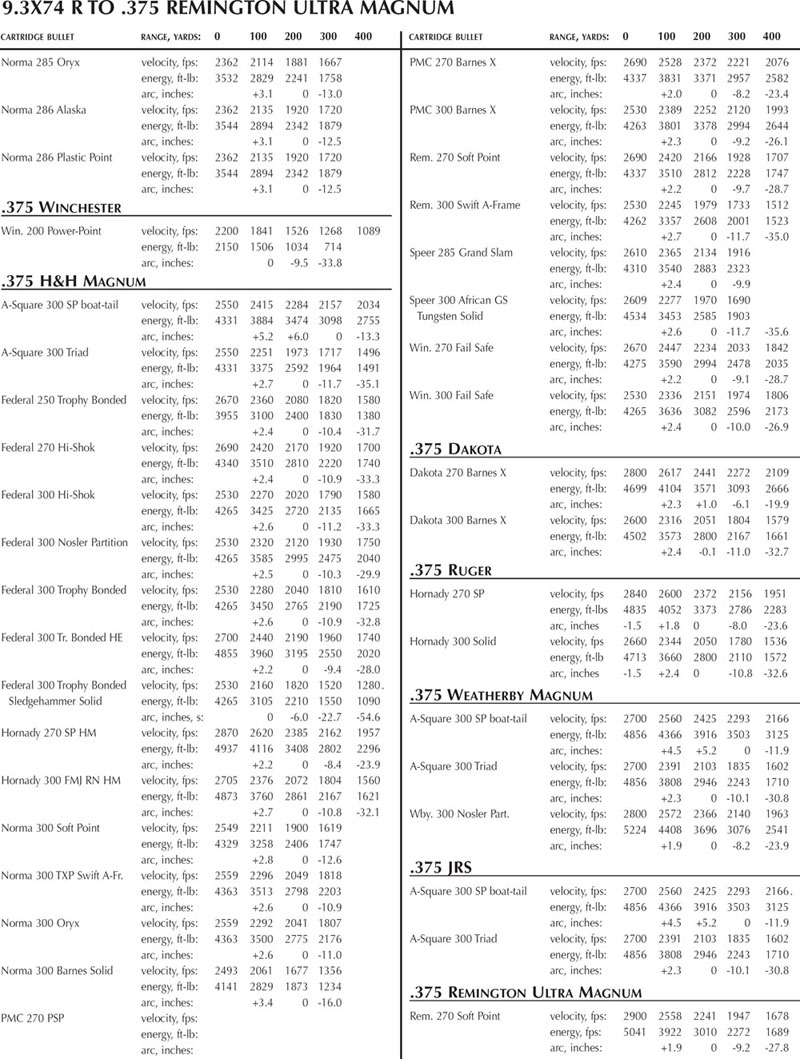


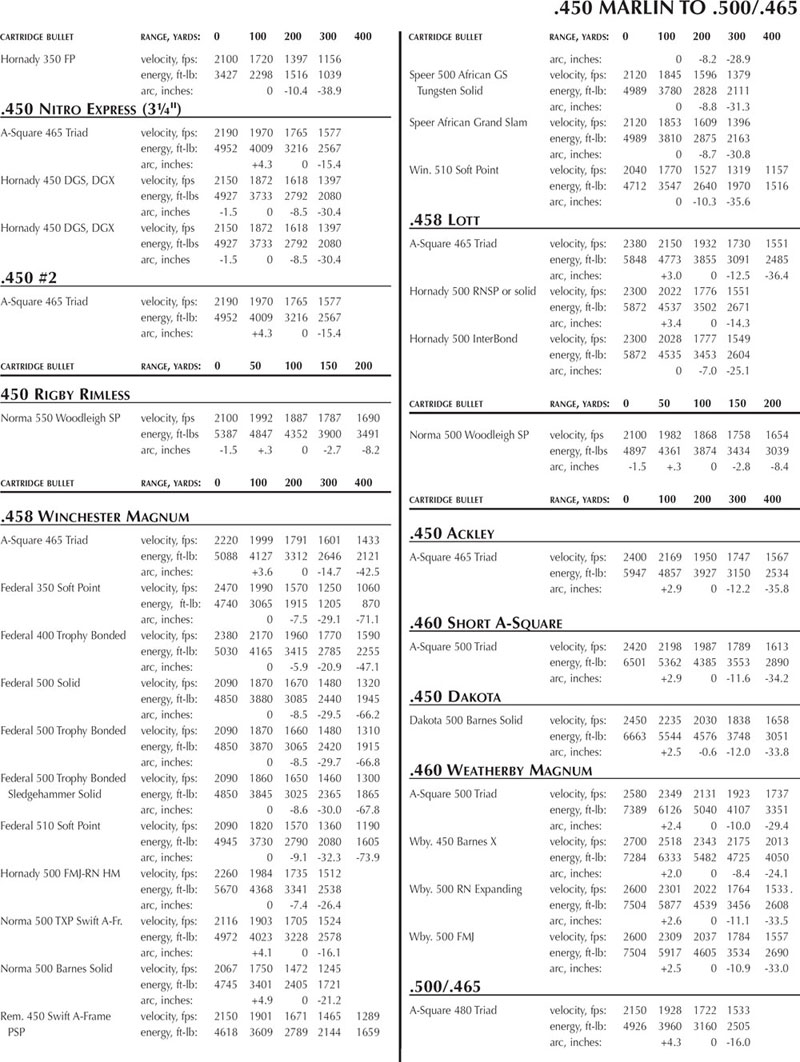
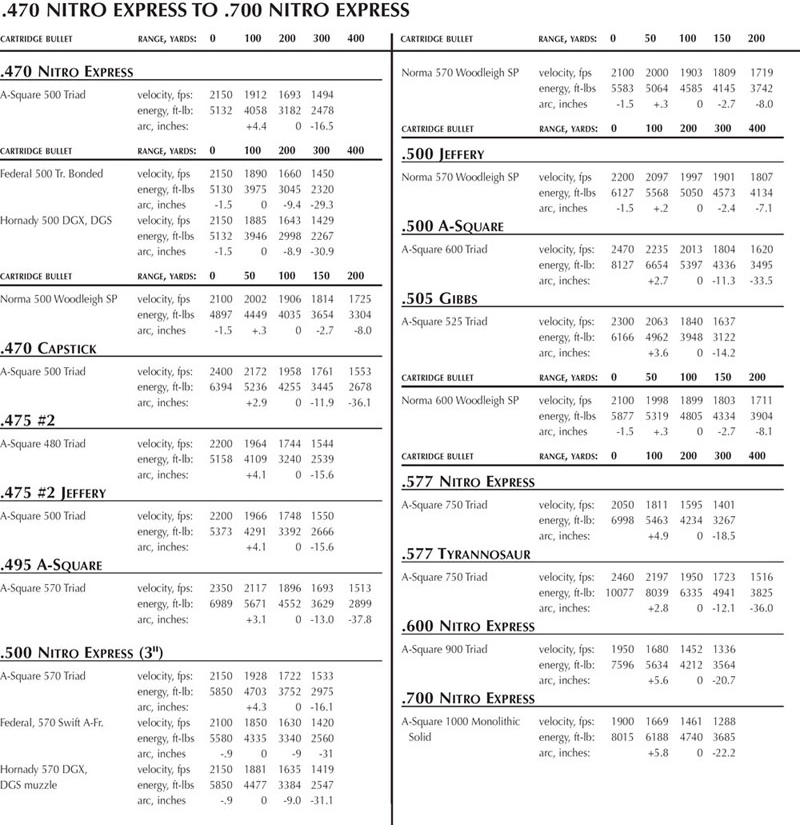
Ballistics Tables for Modern Sporting Rifles
Data shown here is taken from manufacturers’ charts; your chronograph readings may vary. Barrel lengths for pistol data vary, and depend in part on which pistols are typically chambered in a given cartridge. Velocity variations due to barrel length depend on the baseline bullet speed and the load. Velocity for the .30 Carbine, normally a rifle cartridge, was determined in a pistol barrel.
Listings are current as of February the year Shooter’s Bible appears (not the cover year). Listings are not intended as recommendations. For example, the data for the .25 Auto gives velocity and energy readings to 100 yards. Few handgunners would call the little .25 a 100-yard cartridge.
Abbreviations: Bullets are designated by loading company, weight (in grains) and type, with these abbreviations for shape and construction: BJHP=brass-jacketed hollowpoint; FN=Flat Nose; FMC=Full Metal Case; FMJ=Full Metal Jacket; HP=Hollowpoint; L=Lead; LF=Lead-Free; +P=a more powerful load than traditionally manufactured for that round; RN=Round Nose; SFHP=Starfire (PMC) Hollowpoint; SP=Softpoint; SWC=Semi Wadcutter; TMJ=Total Metal Jacket; WC=Wadcutter; CEPP, SXT and XTP are trademarked designations of Lapua, Winchester and Hornady, respectively.
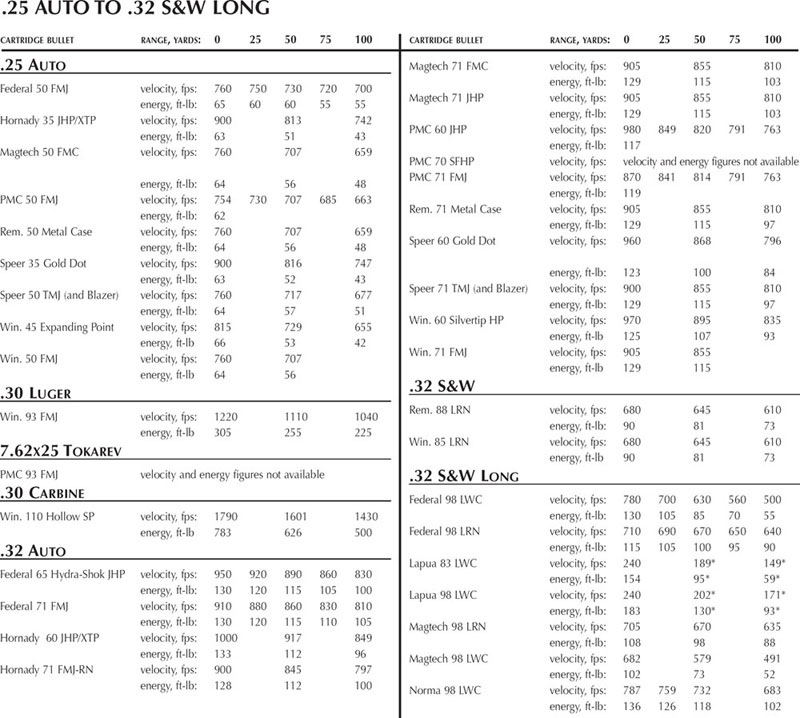
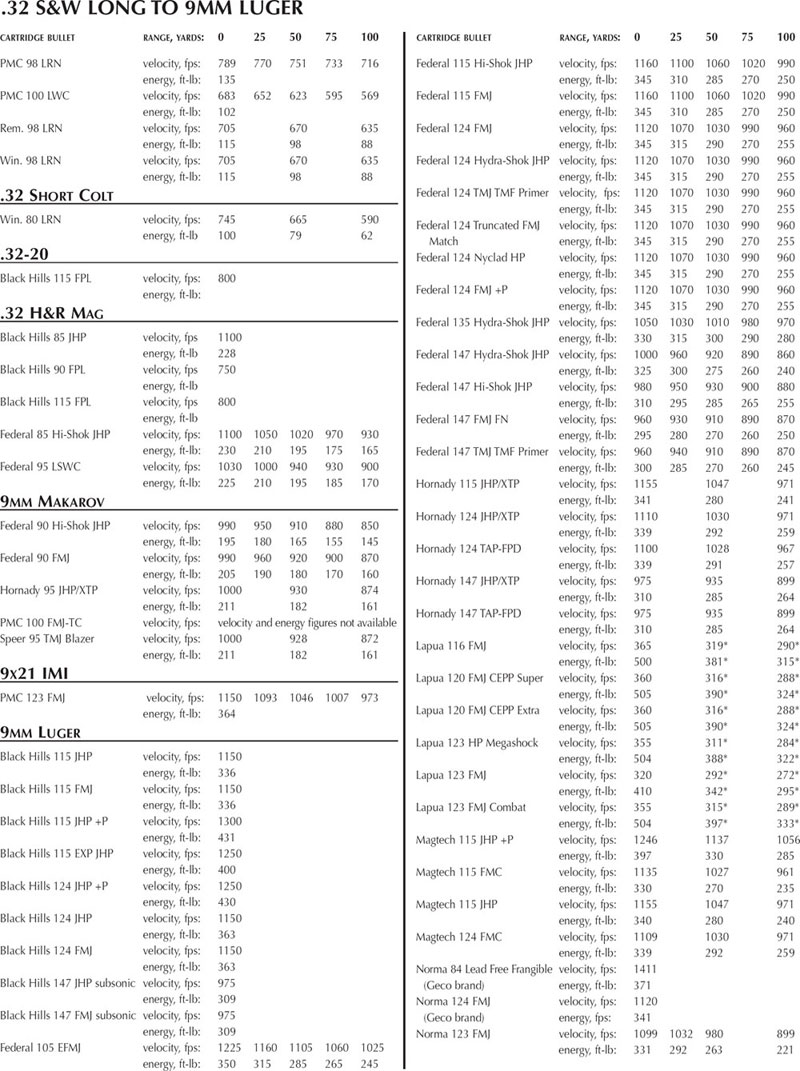
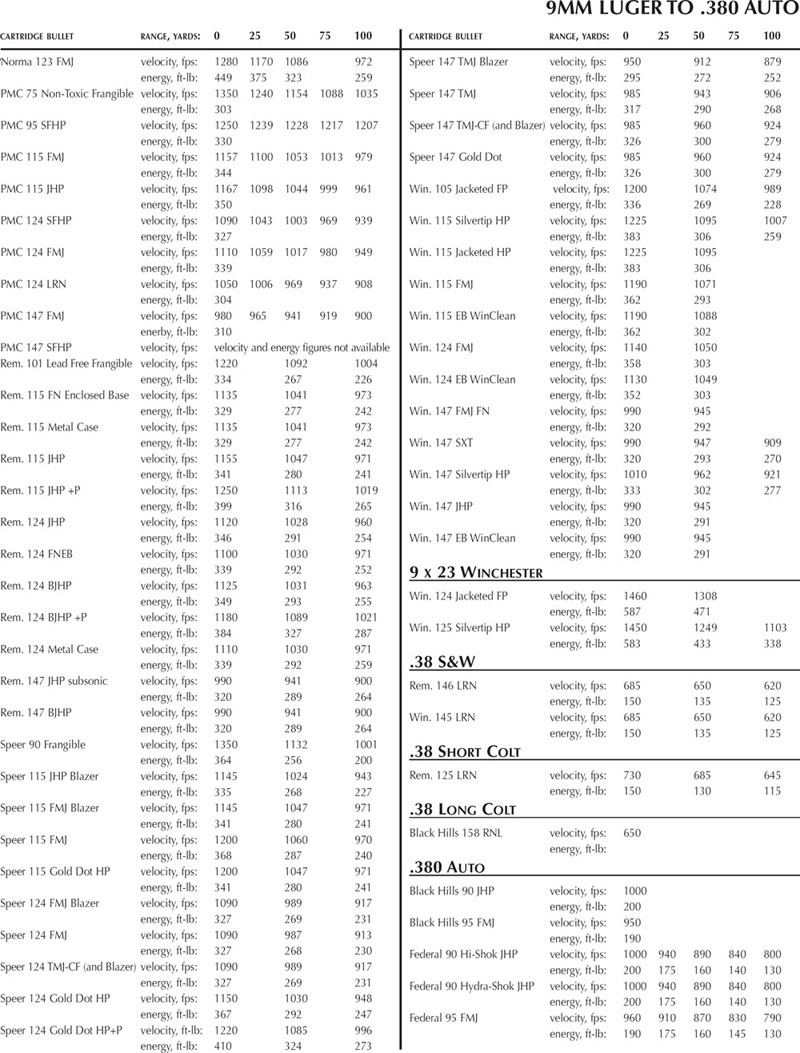
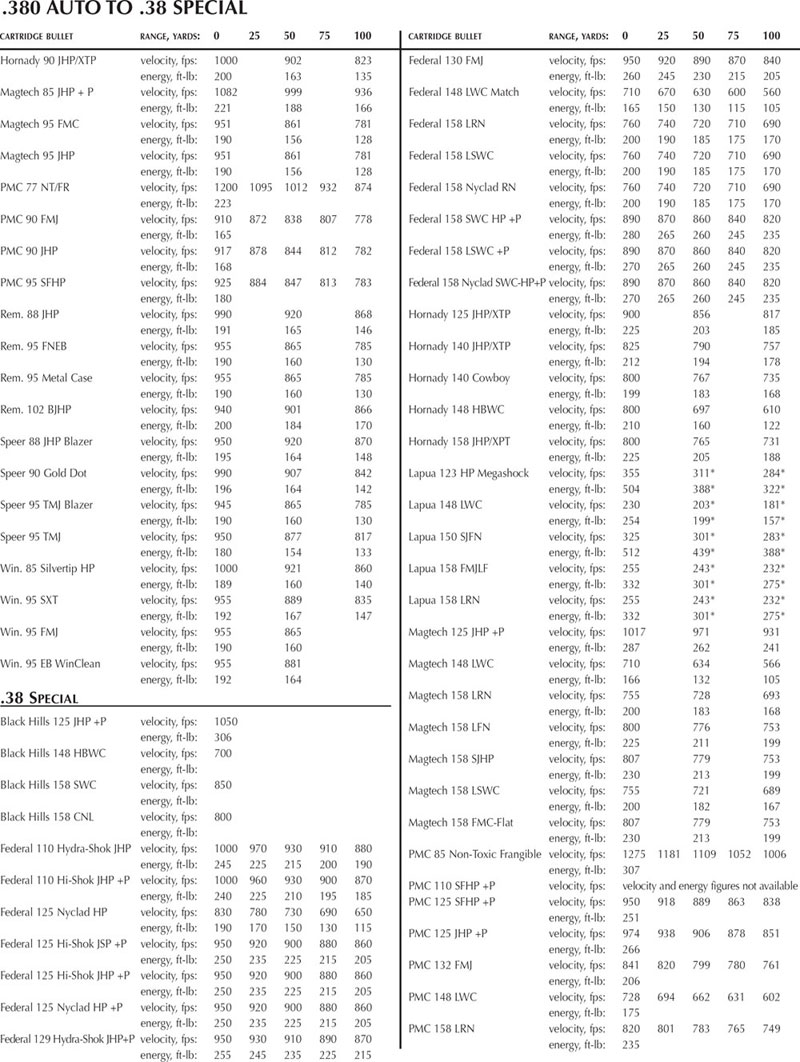
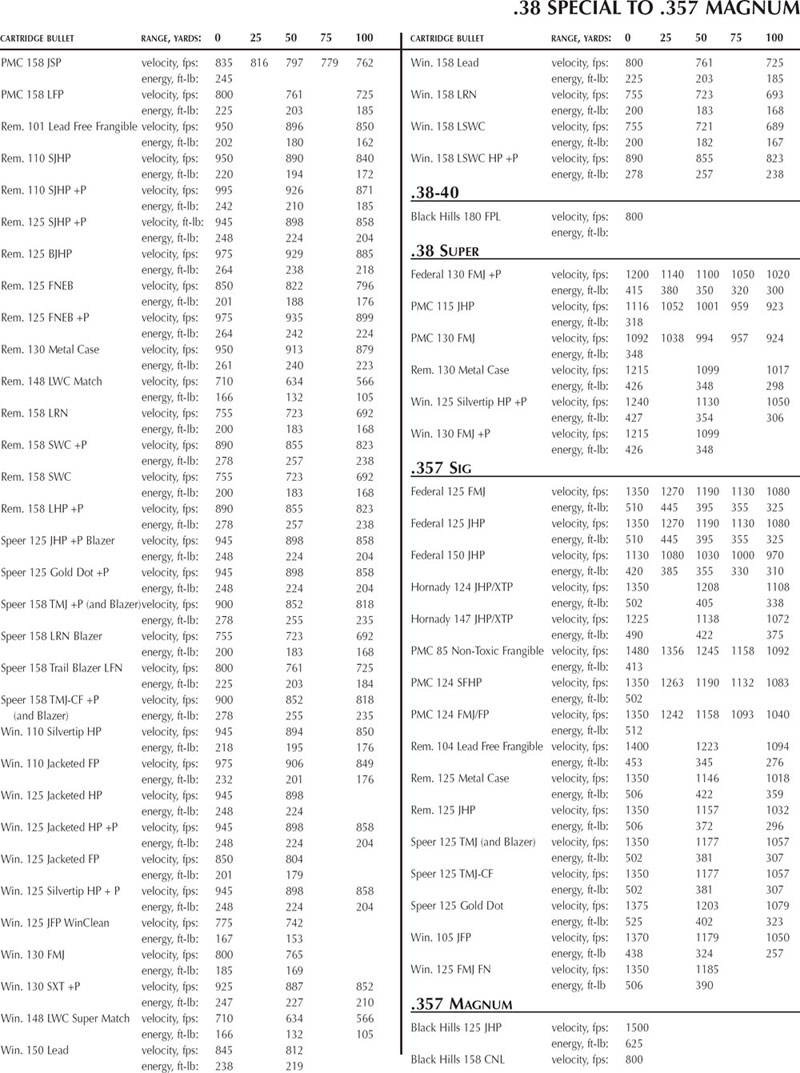
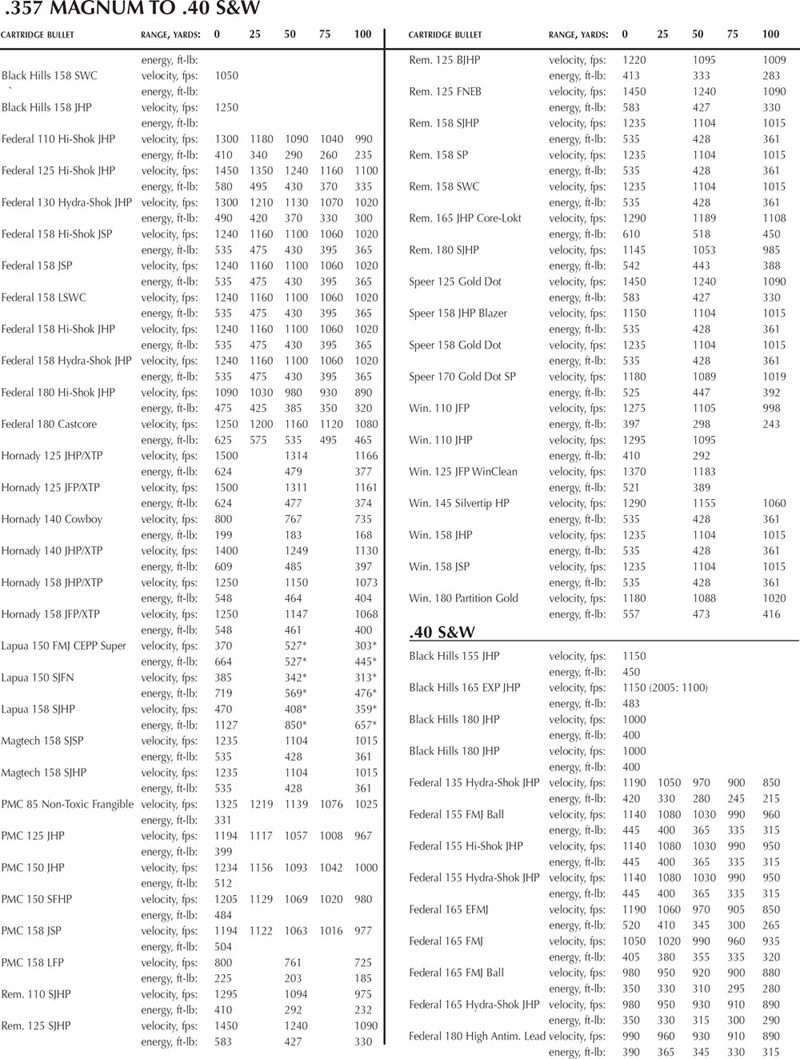
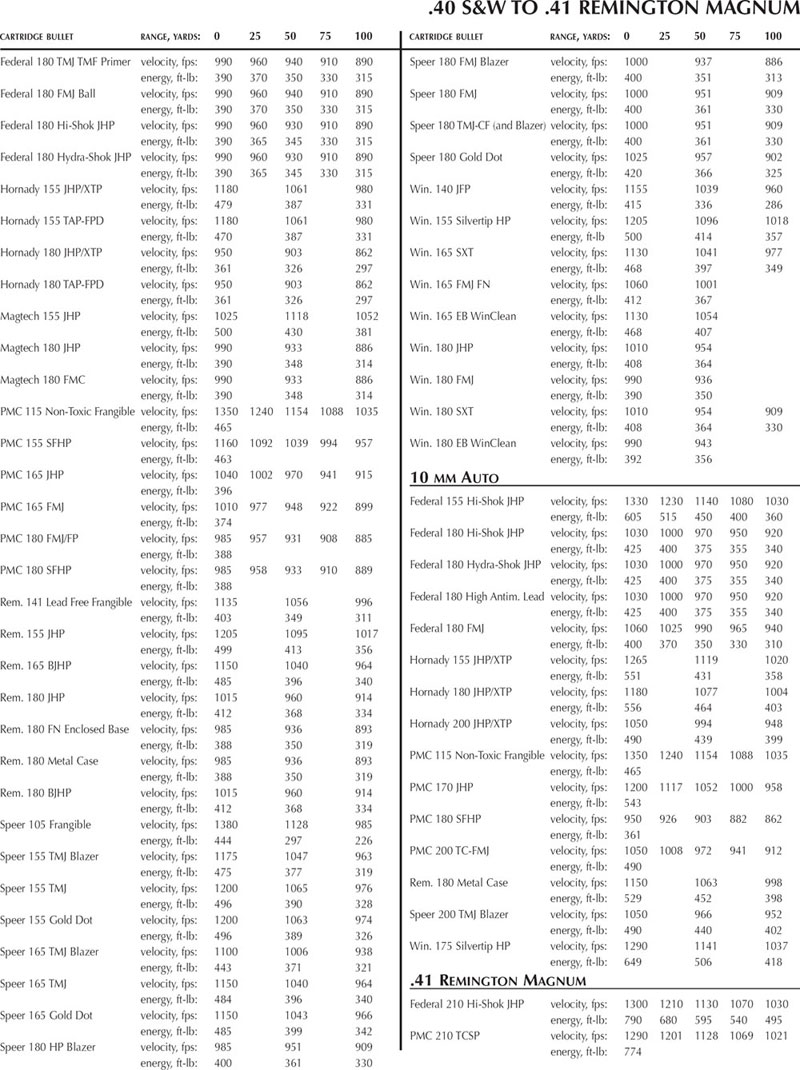


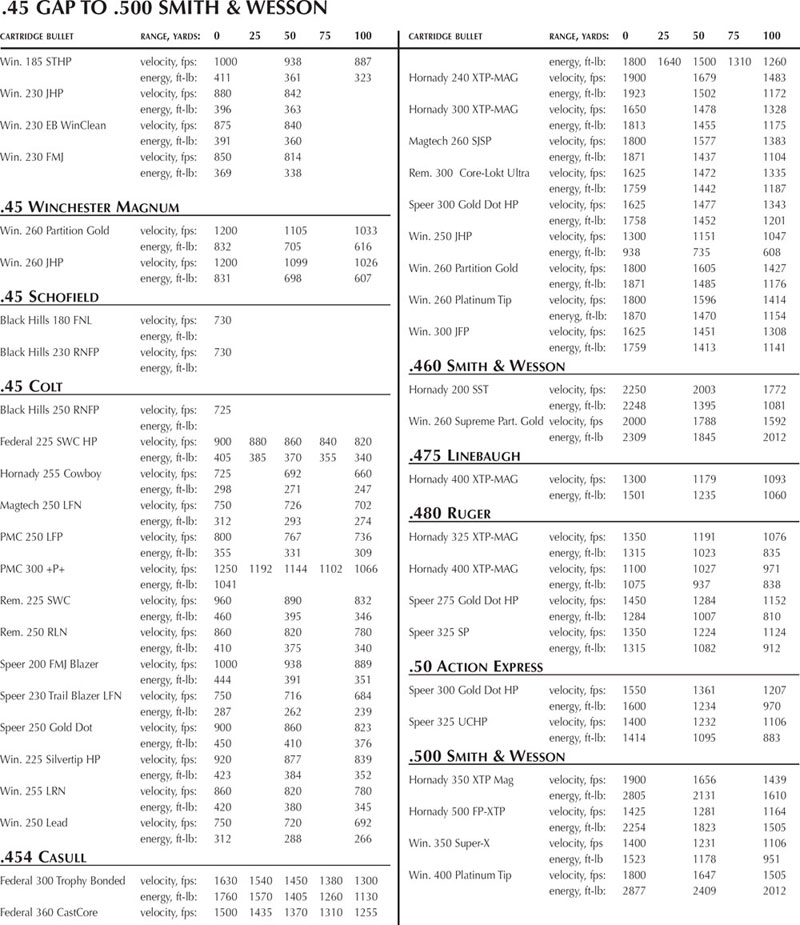
Table of contents
- Title Page
- Dedication
- Copyright
- Acknowledgments
- Foreword
- CONTENTS
- INTRODUCTION
- SECTION I: BALLISTICS IN HISTORY
- SECTION II: THE MUSCLE BEHIND THE SHOT
- SECTION III: BULLETS—THE INSIDE STORY
- SECTION IV: SPEED, ENERGY, AND ARC
- SECTION V : PUTTING BALLISTICS TO WORK
- SECTION VI: FOR LONGER REACH
- BALLISTICS TABLES FOR MODERN SPORTING RIFLES
- GLOSSARY